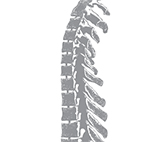Pain in the lower back, also known as the lumbar spine, is one of the most common reasons people seek medical attention. As a minimally invasive spine surgeon one of the most common conditions I treat are lumbar disc herniations. The vertebral bodies are the building blocks of the spinal column and are separate from one another by shock absorbers known as intervertebral disc. These disc can herniate (bulge outward) and compress the nerve roots heading toward the legs.
Not all lumbar disc herniations need surgery and most patients are able to avoid an operation. Conservative medical management for a lumbar disc herniation consist of:
- Physical Therapy
- Non-steroidal anti-inflammatories (like Advil or Aleve)
- Weight Loss
- Smoking cessation
If conservative medical management has failed then a minimally invasive surgical procedure can be performed.
A small (2cm) incision using a microscope can be used to remove the disc herniation.
Check back later for more information!




Write a comment: